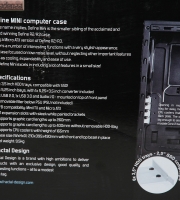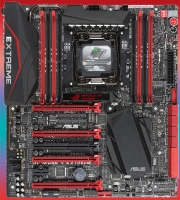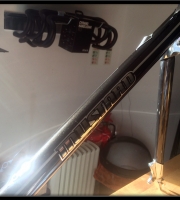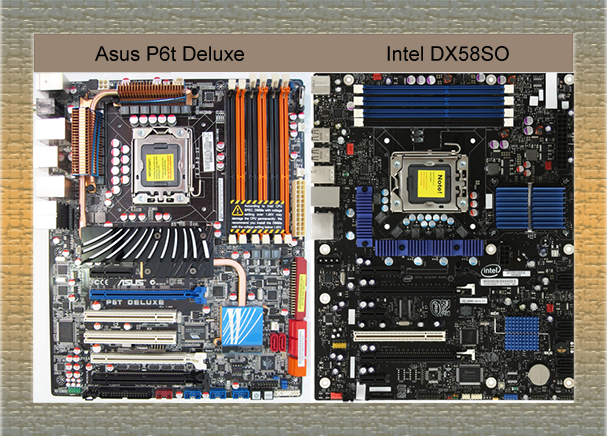



Enthusiast joe 1: Hmm. Ok, nice and simple so far…..uh….just a couple of things dear sirs. Mr. Asus I can’t help but notice your board has six memory slots and Mr. Intel, yours only has four, any reason?
Mr Intel: My bountiful blueprint makes things very clear, tri channel memory, a total of 25.6 gigabytes per second of bandwidth for the user, that is what I have provided.
Enthusiast joe 2: I see, Mr Asus, because your board has six, doesn’t that mean double the bandwidth.
Mr. Asus: No, bandwidth is exactly the same and its still three channels, but we thought it might be helpful to provide an extra three slots for those who want both tri channel and the maximum amount of memory Mr. Intel’s chipset allows for, more memory might not mean more actual bandwidth but it certainly helps speed up certain applications.
Enthusiast joe 1: Mr. Asus does have a point there, your chipset will permit a maximum of 24gb of memory
Mr Intel: As far as I am concerned I have implemented exactly what I promised, triple channel DDR3, nowhere do I state a maximum on my blueprints and if I had done it would have said “upto 24gb”, this is a limit that Mr. Asus has chosen to exploit and I’m sure his customers shall be most satisfied. Every key feature on both our boards is the same. The Same memory bandwidth, the same PCI Express speed, the same number of PCI Express lanes and so on.
Enthusiast joe 2: And both board support the same processors?
Mr Intel: Absolutely.
Mr. Asus: Quite correct
Enthusiast joe 1: Fair enough, I think I’ll take Your board Mr. Intel, its a little cheaper and having a board made by the manufacturer of the chipset sounds like a pretty safe bet, I’ll be using it with an i7 940 chip, I hope it’ll serve me well, .
Enthusiast joe 2: I’m going with Asus, could do with the extra memory and no doubt the over clocking facilities will be excellent. I’m breaking the bank with and i7 965 Extreme, just can’t resist having the best, hope its worth it!
———————————————————————————–
Not much more than a year passes, during which our micro machinating Megladon (that’s Intel) decides to unleash a clutch of new processors. These included the i7 930, i7 950, i7 960 and i7 975 Extreme. Each is again a quad core 45nm chip based on the same 1366 socket design and “Nehalem” architecture. The only variable is the speed and both of our average Joe’s were delighted to discover that each of their boards would be compatible with all 4 cpus by way of BIOS upgrades provided by their respective manufacturers.
Throughout 2010 and the first half of 2011, a further four new CPUs emerge, in terms of their external physical dimensions, these chips are exactly the same as their socket 1366 ancestors but this time, under their heat spreaders, a few noteworthy upgrades resided. First, a smaller die christened “Westmere”. Just 32nm instead of 45, consuming less energy, generating less heat, and paving the way for overclockers to achieve superior results. Second, an extra two cores, each with hyper threading, making 12 data crunching threads in total. Another tantalizing prospect for our enthusiastic Joes.
Once more, both Intel and Asus readily provided a bios to afford each the chance of a beneficial and convenient upgrade.